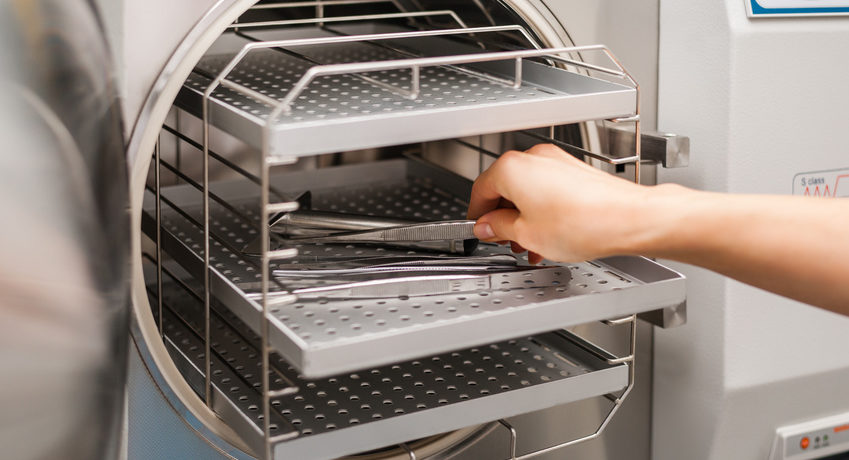Methods of sterilization
- Physical methods: heat, light, filtration.
- Chemical methods: liquids and gases.
A. Heat:
a) Moist heat: Boiling water generates steam above 100 degree C which causes denaturation or coagulation of cellular proteins. Moist heat has high penetration power and effective than dry heat. Eg. Autoclave(in figure)(121 degree C and 15 lbs pressure for 15-20 minutes)(culture media, rubber goods, syrings, gowns, dressings), pasteurization(63 degree C for 0 minutes or 72 degree C for 20 seconds)

b) Dry heat: Here no steam is used. Heat is generated by burning fuels, coils and kills the microbes by oxidation. This takes more time to sterilize and requires higher temperature. Eg. Hot air oven(for glasswares. In figure), flaming, incineration(burning- sputum, stool, carcass).

B. Light:
a) Radiant: Uses X-rays, alpha, beta, gamma rays for sterilization. These rays have high penetrating power and are more effective than UV rays. They cause lysis of DNA by dimer formation. Eg. Sterilization of rubber or plastic disposal goods, disposable syringes, surgical catgut.

b) Irradiant: IR and UV-rays (200-260 nm wavelength) are used for sterilization. These cause damage to the DNA. Eg. Disinfection of surfaces and air of bacteriological labs and operation
Note: Sterilization using UV rays is called cold sterilization as there is no increase or decrease in temperature.
B. Filtration:
The most common used method is the membrane filter method with filter size of 47 mm and porosity 0.45 µm. Sterilization by filtration is used for the purification of water and blood products
Chemicals(liquids & gases)
- Alcohols🙁 70-95%) ethanol, isopropanol.
- Aldehydes: formaldehyde(3-8%), glutaraldehyde(2%)
- Phenolic compounds: chlorohexidine(savlon), chloroxylenol(dettol), cresols(Lysol).
- Halogens: chlorine, iodine.
|
Disinfectants |
Antiseptics |
|
High concentration solutions |
Less concentration solutions |
|
Kill the microbes(cidal) |
Usually inhibit growth of microbes(static) |
|
Use to disinfect non-living objects |
Use for living cells |
|
Eg. Cresols, KMnO4, formaldehyde |
Eg. Spirit(alcohols), dettol, savlon |
C. Autoclaving:
- Sterilization by moist steam in a specially designed autoclave machine.
- Used for wide range of materials like culture media, rubber goods, syringes, gowns, dressings, etc.
- Principle: steam has a high penetrating power. Saturated steam at a high pressure and temperature is a better sterilizing agent than dry heat. Latent heat takes part in killing bacteria by coagulating their proteins.
- Autoclaving is usually done at a temperature of 121oC and chamber pressure of 15 lbs for 15-20 minutes.
- It contains horizontal or vertical pressure cooker or boiler, doubled wall made of stainless steel or gun metal. Goods for sterilization are kept in inner chamber. Base contains a heating rod, which heat the water to form vapor. For some time after boiling of water inside the chamber (initially), the steam and air mixture is allowed to escape through discharge tap till the cylinder become air free. When the desired pressure is achieved ie: 15 lbs(noted in pressure gauge), sterilizing period is maintained for a fixed time ie: 15-20 minutes. The temperature is automatically achieved (121oC) at 15 lbs pressure. After desired time, heater is disconnected and the autoclave is allowed to cool till the indicator of pressure gauge shows atmospheric pressure. Then the discharge tap is opened slowly and the sterilized materials are taken outside for lab use.
